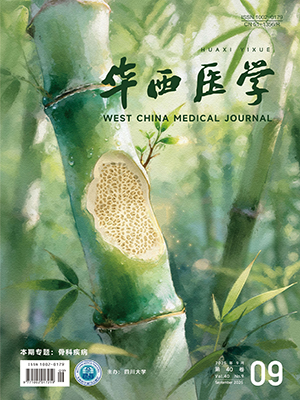| 1. |
Lebel E, Blumberg N, Gill A, et al. External fixator frames as interim damage control for limb injuries: experience in the 2010 Haiti earthquake[J]. J Trauma, 2011, 71(6): E128-E131.
|
| 2. |
葛文汉, 李兵, 阮海林, 等. CRAMS评分评估急性创伤患者预后的价值[J].中华创伤杂志, 2014, 30(8): 807-810.
|
| 3. |
Alam N, Hobbelink EL, van Tienhoven AJ, et al. The impact of the use of the Early Warning Score (EWS) on patient outcomes: a systematic review[J]. Resuscitation, 2014, 85(5): 587-594.
|
| 4. |
白艳, 胡海, 曹钰, 等. 3种现场检伤分类法在芦山地震中的应用价值研究[J].中国急救复苏与灾害医学杂志, 2015, 6(10): 541-545.
|
| 5. |
王连馥, 刘嘉炜, 陈冬琴.等急诊快速病情严重程度评估——一种新的急诊病情评估方法[J].中国急救医学, 2014, 34(10): 910-913.
|
| 6. |
Gouzou M, Karanikola M, Lemonidou C, et al. Measuring professional satisfaction and nursing workload among nursing staff at a Greek Coronary Care Unit[J]. Rev Esc Enferm USP, 2015, 49(2): 15-21.
|
| 7. |
Imhoff BF, Thompson NJ, Hastings MA, et al. Rapid emergency medicine score (REMS) in the trauma population: a retrospective study[J]. BMJ Open, 2014, 4(5): e004738.
|
| 8. |
方婷婷, 肖江琴, 王海燕, 等. MEWS、NEWS和APACHEⅡ在急性中毒危重患者预后判断中的应用[J].山东医药, 2015, 55(47): 14-16.
|
| 9. |
张彦虎, 周苗苗, 吴晓英. TISS在SICU护理工作量评定与分析中的应用[J].中国护理管理, 2008, 8(11): 41-44.
|
| 10. |
李亦纲, 张媛, 李志伟.地震灾区救援力量优化调配模型[J].自然灾害学报, 2012, 21(3): 150-154.
|
| 11. |
李晓辉, 胡海, 高永莉, 等. 4·20芦山地震261例不同灾情地区伤员伤情分析[J].中国急救复苏与灾害医学杂志, 2014, 2(2): 105-107.
|
| 12. |
Rythereh D, Smith GB, Schmidt PE, et al. Views-towards a National Early Warning Score for detecting adult in patient deterioration[J]. Resuscitation, 2010, 81(8): 932-937.
|
| 13. |
邓旭军, 樊莉. REMS评分系统在院前急救中的应用研究[J].新疆医学, 2015, 45(11): 1613-1615.
|
| 14. |
许榕椿, 朱震豪, 翁志成, 等. REMs评分与APACHEⅡ评分对预测急诊危重患者预后的临床意义[J].实用临床医药杂志, 2009, 13(23): 35-36.
|
| 15. |
Imhoff B, Thompson NJ, Hastings MA, et al. Rapid emergency medicine score (REMS) in the trauma population: a retrospective study[J]. BMJ Open, 2014, 4(5): 4738.
|
| 16. |
任艺, 邵旦兵, 刘红梅.三种不同评分在急诊危重患者预后评估中的对比研究[J].中华急诊医学杂志, 2014, 23(1): 71-74.
|
| 17. |
胡海, 杜鑫淼, 曹钰.以休克指数作参数的修正创伤评分在地震现场躯干伤伤员转运前伤情评估时的应用价值[J].中国急救复苏与灾害医学杂志, 2015, 10(5): 415-419.
|
| 18. |
吉春玲, 周厚荣, 杨秀林, 等. REMS评分对ST段抬高性心肌梗死患者近期死亡风险的预测价值[J].中国急救医学, 2015, 35(4): 308-312.
|




